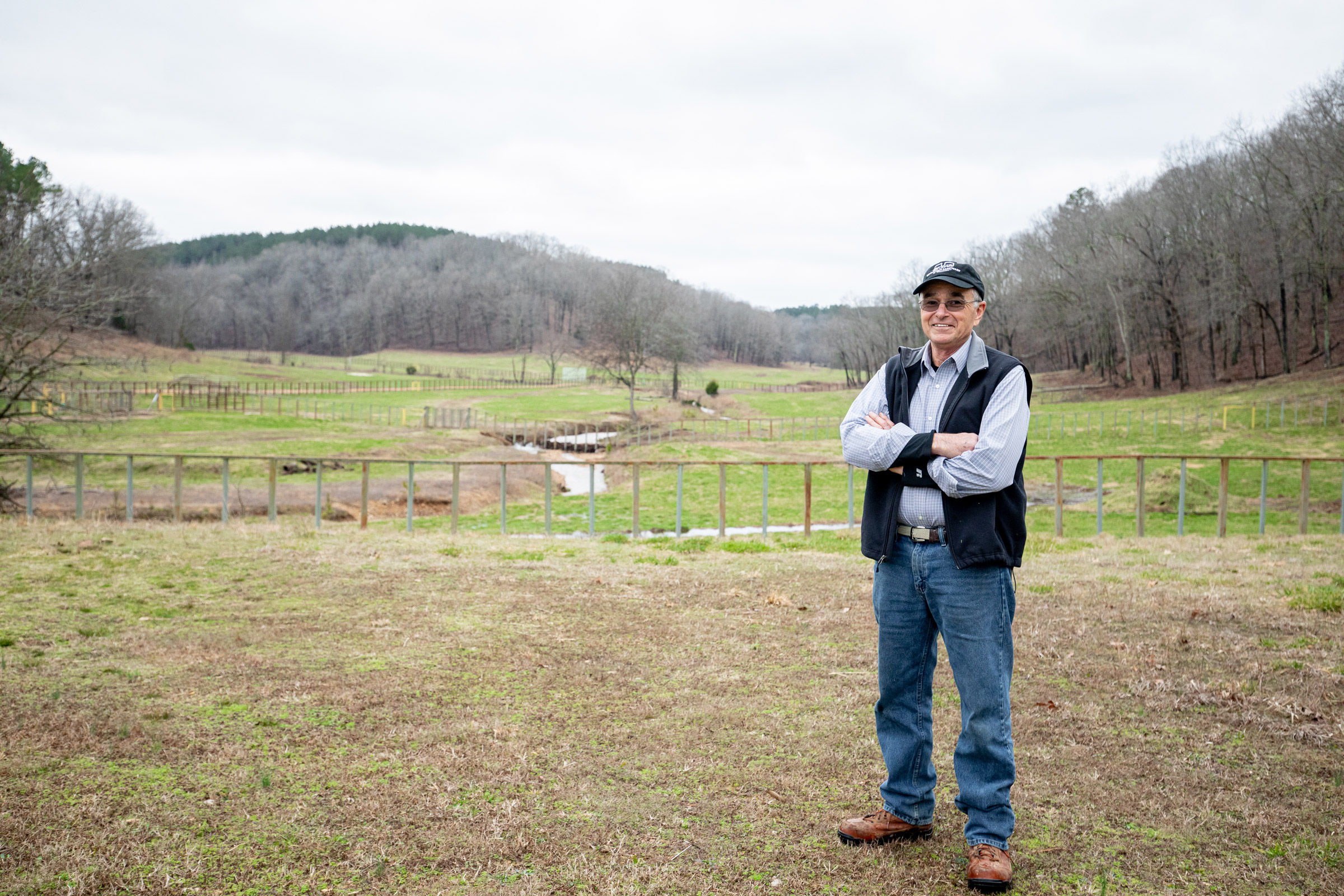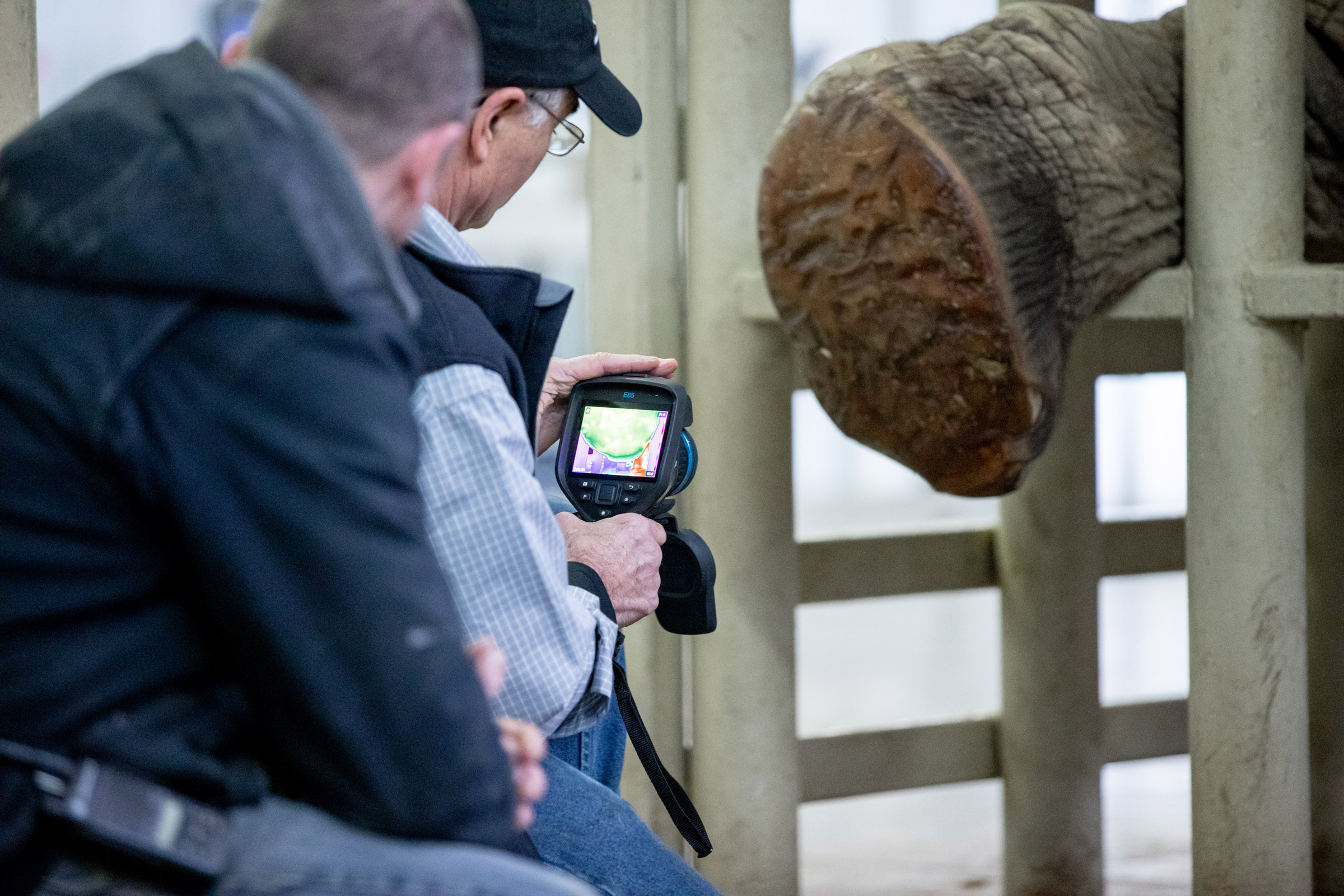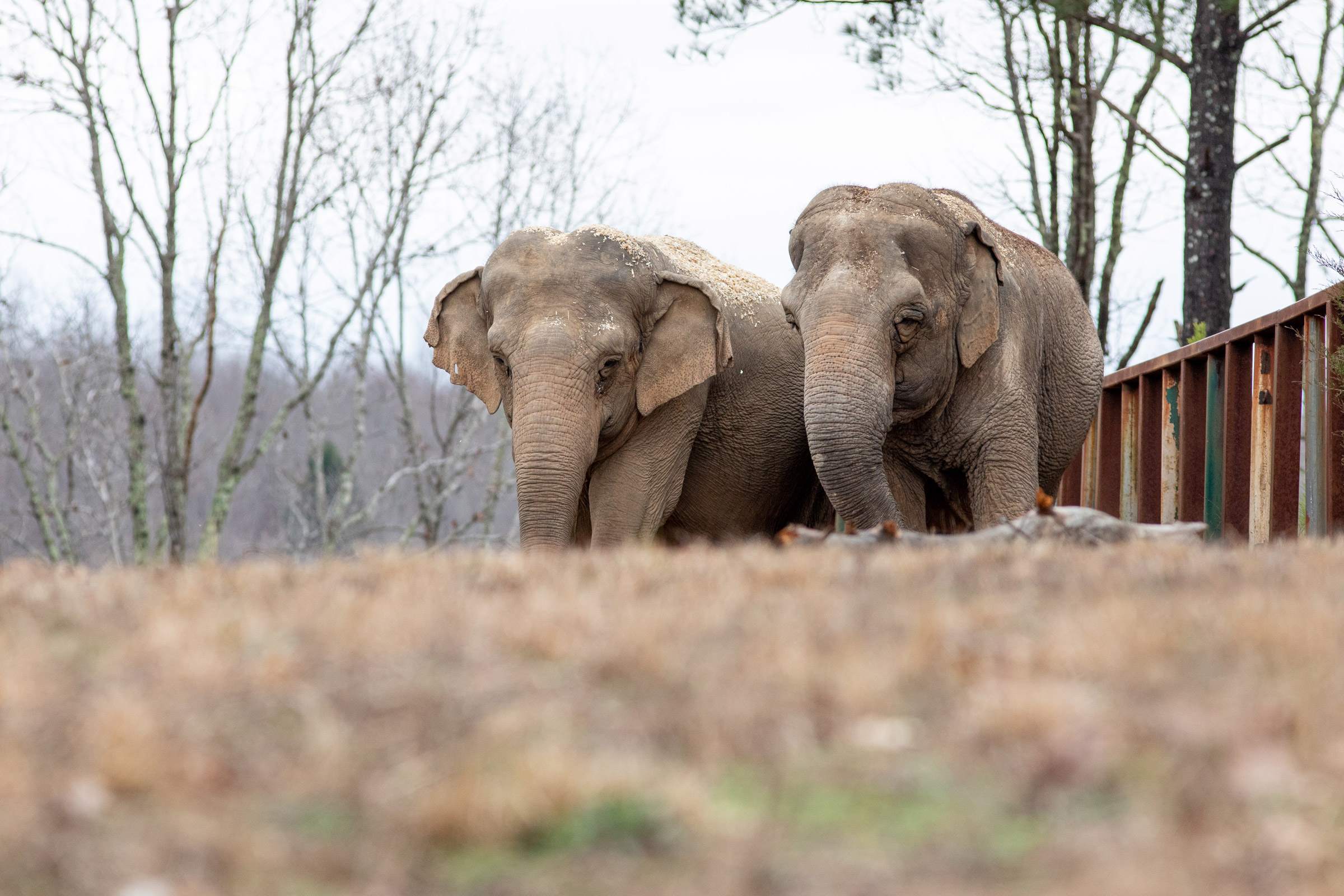By Jennifer Sicking | Photos by Raffe Lazarian
“Who’s making more noise? Me or her?” he says, smiling while gesturing with his thumb over his shoulder at the African elephant, Flora, who strode across the gravel in her enclosure to grab the pear tree branch just thrown over the fence. She made as much noise as the cat that was simultaneously sneaking around the elephant barn.
Since Scott, known as “Doc,” began tending to his clients at The Elephant Sanctuary, he’s learned more than just how silently they can move.
“Dr. Scott has dedicated himself to improving the lives of our elephants—making himself available 24 hours a day, seven days a week. His skill, knowledge, experience and gentle nature has guided elephant care at the sanctuary for 25 years,” says Janice Zeitlin, sanctuary CEO.

Growing up in Maury County, Tennessee, Scott had a hero—local vet D.C. George, who tended the dairy cattle and later the shorthorn beef cattle on the Scott family farm.
“He was in his 50s or 60s, and he was still happy,” Scott remembers.
With George as an example and a love of animals in his soul, Scott and a friend dreamed of becoming veterinarians when they grew up. But Scott had one hesitation.
“I thought you had to be an absolute genius to be a vet,” he says.
After attending Freed-Hardeman University in Henderson, Tennessee, where he met his wife, Connie, Scott enrolled at UT Knoxville and met some of the people who enrolled in the vet school.
“I didn’t know if I was smarter, but I knew I could work harder,” he says.
That philosophy worked, and he graduated from UT Knoxville in 1981. He and Connie moved to Maury County, and Scott began treating animals in Columbia. In 1984, Scott opened a clinic in nearby Hohenwald. For 25 years, he, along with a vet in Hickman County and another in Wayne County, cared for animals large and small in an area the size of Rhode Island. Since then, he’s hired additional veterinarians at his practices in Hohenwald and Linden.
Until 1995, the bulk of his clients were cows, horses, cats and dogs. The most exotic animals he tended would either be a herd of bison or a herd of elk. “The elk,” he says with a laugh, “would kill you and not even feel bad about it.”
Then, in 1995, a client arrived in his clinic. She asked him to be the vet for an elephant sanctuary she was establishing there in the tail of the Central Basin Ridge, which caused the area’s early Swiss settlers to name the fledgling town Hohenwald or “High Forest” in German.
While mastodons once roamed east of the Mississippi River and mammoths wandered the grasslands of the American West, they disappeared during the great die-off that removed other megafauna animals such as the cave bear and saber-toothed cat. The first elephant—a 2-year-old female—was brought to the United States in 1796. Her owners quickly realized that people would turn over their coins to see the animal of books and legends. More people brought more elephants, which then led to elephants traveling with circuses and standing in zoos.
In 1995, the Elephant Sanctuary opened as a home for old, sick or abused pachyderms and had a goal to let the elephants live out their lives as free as possible. It is one of two sanctuaries accredited by the Global Federation of Animal Sanctuaries for elephants in the United States. It is the only sanctuary accredited by the Association of Zoos and Aquariums. Now grown into 2,700 acres that are crossed by streams and dotted with ponds and a 25-acre lake, the sanctuary is currently home to 11 elephants. Divided into areas designated as Asia (for Asian elephants), Africa (for African elephants) and Q (for those in quarantine), the elephants knock down trees, dig wallows and connect with other elephants in their enclosures. Video cameras mounted throughout the sanctuary—which is closed to visitors—allow the public to watch the elephants munch their way through the high forest.
The Elephant Sanctuary
While the sanctuary is closed to visitors, it has opened a visitors’ center in downtown Hohenwald. There visitors can learn about its residents, elephant conservation efforts in Asia and Africa and more through interactive multi-media exhibits. The center opened in 2019 and had 2,500 visitors. It hopes to grow that number to 5,000 in 2020.
There’s also an educational aspect to the sanctuary. In 2019, the sanctuary’s distance-learning initiative presented 476 online programs to 14,000 students in 44 states, five Canadian provinces and five countries outside of North America.
To learn more about the sanctuary or to view the elephants on the elecam, visit: www.elephants.com.
Scott’s first elephant patient was the sanctuary’s first resident, Tarra, when she developed hemorrhoids.
“There are some species-specific things, but when you do a lot of animals, there’s a lot of knowledge that transfers,” he says. “Elephants process their food a lot like horses and rabbits.”

Through research and reaching out to experts, the wiry Scott has developed expertise in caring for the animals.
“There’s a saying that you want to be on the cutting edge in medicine,” he says. “Well, we’ve been on the bleeding edge.”
Around the time the sanctuary started, tuberculosis (TB) was being diagnosed in elephants.
“Elephants have been domesticated longer than cattle,” Scott says. “Mahouts live with them, real close to them, and share germs. Elephants get it from humans and give it back.”
All of the elephants living in The Sanctuary’s Q Habitat arrived at the sanctuary with known exposure to TB. With a positive TB test, they receive a 90-day regimen of three drugs, and treatment continues for one year. All of the elephants have a trunk wash once a year to test for the disease. Since the wash isn’t the most reliable method, blood tests also are conducted on the elephants. X-ray machines are not large enough to X-ray the elephants’ lungs to look for the disease.
From years of standing on concrete, many of the elephants have arthritis in their legs, for which they receive laser treatments. They also are prone to developing abscesses in their feet.
“Think about an abscessed tooth and how it hurts all the time,” Scott says.
Abscesses also can move into the elephant joints. Caretakers keep a close watch on the elephants’ feet, which are formed mostly of soft tissue. Scott uses a thermal camera to track blood flow on the elephants to see if an area is inflamed.
“It’s a non-invasive way to show if there’s a hot spot on their bodies,” he says.

Caretakers use protected contact to conduct checkups on their charges. Instead of exerting dominance as in free contact, with protected contact a barrier remains between humans and elephants, and the elephants can walk away if they choose. When the elephants lift a foot or something else that the caretaker requests, they are rewarded with treats such as fresh fruit and vegetables.
The elephants also let their caretakers know that the treatments work. They come into the barn and wait for their laser treatments. One Asian elephant, Shirley, would return to the barn when the epoxy mesh, which protected her abscessed foot from mud and rocks, came off. She would lift her foot to show caretakers that the epoxy was missing.
“I’ve gained more respect for them,” Scott says of his charges. “Over the years, I’ve learned how intelligent they are and how they’ve been treated.”
In 1992, Scott and his wife adopted a daughter, Alina, from Romania to join their two sons, Nathaniel and Andrew.
“I thought, ‘I can’t change the world, but I can change the world for this girl,’” he says. “She ended up changing our world and works with me a lot.”
That same philosophy factors into his care for the elephants. For the elephants that arrive at the sanctuary, he provides the best care he can to help change their world.
“I’m a boots-on-the-ground kind of guy,” he says.
At the sanctuary, the elephants have freedom to roam across the acres, enjoying the high forest. But it takes them time to learn they have that freedom. They wait for caretakers to tell them what to do and where to go. The caretakers refuse. Slowly they learn, often with the guidance from other elephants, to take quiet steps down the trails, through the woods and to splash into ponds.
“At the clinic, we have a plaque that says, ‘Dogs have masters. Cats have staff.’ It’s nice to see the elephants becoming cats,” Scott says.
Looking back on his career that started as a boyhood dream and included some patients he never thought possible, Scott calls it fulfilling.
“I can’t imagine doing anything else,” he says. “My idea of heaven is doing this forever.”



